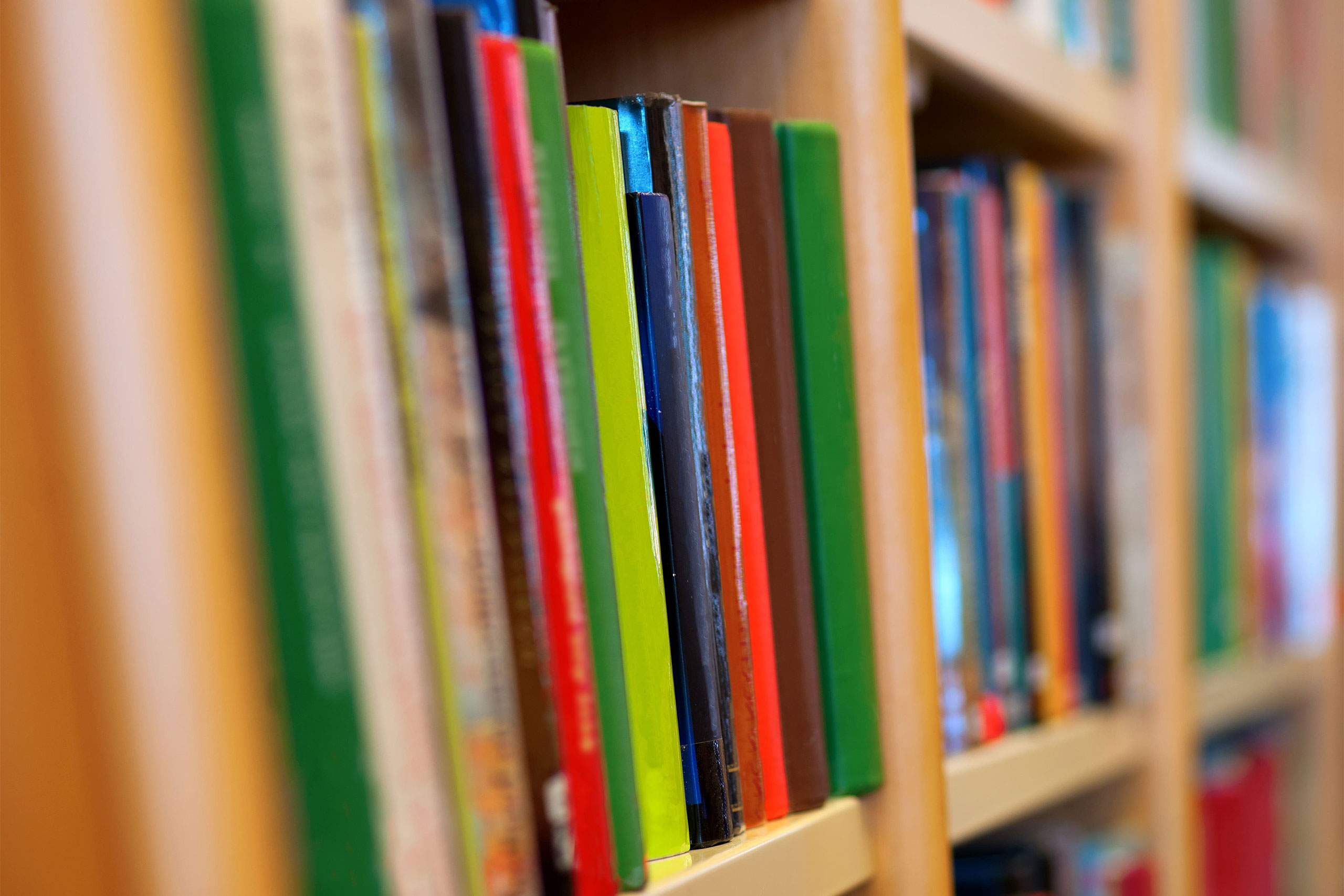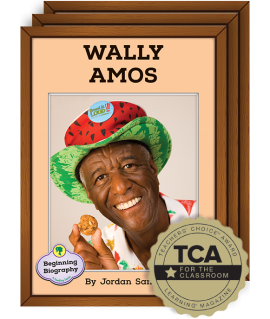A Guide to Classroom Library Organization
Classroom libraries are essential for developing the literacy of students of any age. Whether you’ve inherited your classroom library from a former teacher or you’re building your library from scratch, you’ll need to plan how to organize your classroom library.
The Benefits of a Classroom Library
A classroom library is an important component of a literacy-rich environment. For young students, a print-rich environment supports their developing literacy skills and promotes lifelong learning. According to the National Council of Teachers of English, “A large body of research demonstrates that equitable access to books promotes reading achievement and motivation (Allington, 2002, 2009; Krashen, 2011; Nystrand, 2006; Wu & Samuels, 2004).”
We know that the way that students become better readers is by spending time reading. Research has shown that students who have access to high-quality classroom libraries read 50 percent more than students without a classroom library (Booksource, 2003; Hunger, 1999).
Additionally, well-stocked classroom libraries with high-quality literature can:
- Promote a range of literacy skills
- Provide access to high-interest books on a variety of levels
- Offer opportunities for the representation of your students’ home cultures
- Naturally integrate content across curriculum areas
- Introduce students to new cultures and perspectives
The benefits of a classroom library are numerous. Perhaps most importantly, they help to foster a love of reading through authentic literacy opportunities.

How to Organize Your Classroom Library
When you begin the task of organizing classroom library books, the sheer volume of classroom library ideas can be overwhelming. The good news is, there is no right or wrong way to do it! The design of your classroom library will be unique to your environment, goals, and needs.
Getting Started
Before you begin, think about the following questions:
- Where will you set up your library?
- How much shelf space do you have?
- How will you sort your books?
- How will you keep track of your books?
- What procedures will you need to teach your students?
When planning the logistics of your classroom library, it’s important to think about how students will access the books. Some teachers find that using bookshelves is a simpler, more effective way to organize their books than using bins. Others prefer the accessibility and flexibility of book bins. There’s no one-size-fits-all approach—you may need to experiment to find what works best for you.
Think about how you will handle library procedures, such as what to do with damaged books or the process of checking out and returning books. Taking time to plan for these procedures will help ensure your classroom library runs smoothly.
Rotating books in your library will help your students maintain interest. Consider dedicating an area in your library to display new books that you introduce. This is a great way to highlight books that tie into other areas of your curriculum or to display a story that you’ve shared during a read-aloud.
Consider creating a designated space in your library for student and teacher recommendations. If space is limited, you can create a bulletin board to highlight popular titles. Student ownership and engagement increase when the classroom library is interactive.
Organizing Classroom Library Books
Once you’ve made a plan for the design of your classroom library, you’ll need to determine how you will organize your books. Below are some tips to help you decide which method is right for you.
1. Choose Your Sorting System
- Organize by genre
This simple system makes it easy for students to find (and put back) books that they select themselves. It is also a nice way to introduce students to new literary genres, as well as increase their exposure to nonfiction reading.
- Organize by reading level
This method of classroom library organization has become the topic of much debate. Many literacy professionals agree that a hybrid approach is best when it comes to using leveled books in a classroom library. Consider creating a section of leveled books for students to take home for independent practice in addition to their self-selected choices.
- Organize by theme or subject
Sort books according to common themes or subjects. Similar themes can go in the same basket or section on your shelves. Create labels so that students can easily find the books they want.
- Organize by character or series
Arrange your books by popular children’s characters to make it easy for them to find their favorites. As they grow in their reading abilities, consider creating groups of their favorite book series or authors.
2. Catalog Your Books
Nothing is more frustrating than curating your library with high-quality books only to have half of them go missing by the end of the year. Many teachers find it helpful to use apps to help them keep track of their library books.
3. Decide How to Label Library Books
- Shelf markers
If you are not using bins, think about how you will label your bookshelves so that students can easily locate the titles they want. Consider placing labels on the shelves themselves as well as on the spines of the books. You may also want to use shelf markers to help students navigate the bookshelves.
- Color-code your collection
Depending on your sorting system, color-coding your books can be useful for organizing your classroom library books. For example, all books written by authors whose last names begin with “A” will have a blue label for easy grouping.
- Use numbers
If you’re organizing by genre or theme, you may find it helpful to use numbers to label your library books. Label the bins and the books with the corresponding numbers to simplify book returns.
- Create picture labels
Whether you create the pictures yourself or have your students create them, picture labels will make it easy for students to locate and return their classroom library books.
Involving Students in Classroom Library Organization
You’ve spent time planning and creating an organized classroom library for your students. Now the question is, how will you make sure it stays organized throughout the year?
The key to maintaining classroom library organization is involving your students. In doing so, you will both increase student ownership and save yourself precious time.
One way to do this is to include a classroom librarian as one of your classroom jobs. This student librarian will be responsible for the circulation system you employ, keeping track of what books are borrowed and returned, and keeping the library clean and organized.
It is important for all students to become familiar with where to find books and how to return them to their proper place. Help them practice navigating your library by including a fun scavenger hunt as part of a lesson. For younger students, this may look like creating a simple punch card to help them locate your labels. For older students, you may create a list of questions like these.
Finding Books for Your Library
Making sure your library is stocked with a variety of high-quality books is essential. Books are expensive, and you’ll inevitably need to replace some throughout the year. Here are some of our favorite ways to find books without breaking your budget.
Amazon
Amazon’s Amazon Business for Educators offers wholesale classroom supplies to teachers and enables eligible customers to sign up for Amazon’s Tax Exemption Program. This could be used to purchase books or other supplies for your classroom library organization.
You can set up a classroom wish list for parents, families, and friends so they can purchase books for your classroom.
Barnes & Noble
Barnes & Noble’s Educator program provides a 20% discount for all classroom purchases. They also offer Educator Appreciation Days where teachers receive a 25% discount off the publisher’s list price.
The Book Bundler
Another resource for used books is the Book Bundler. They offer bulk bundles of children’s books, anything from popular series to a mixed assortment. Books are organized by age level and bundles can range from five books to over 30 depending on your selection.
Continental
Continental educational publisher offers early literacy support resources for grades PreK–2. Their Seedling line of 300+ leveled books is geared to help students develop early childhood literacy skills and become successful readers.

Who invented Famous Amos cookies? Who made Barbie a household name? The Beginning Biography Series features engaging topics that are relevant to today’s students. You're sure to keep their attention as they practice reading informational text.
View Product →Local Library Book Sales
Most libraries hold annual or semi-annual book sales. These books are either donated by patrons or are being removed from circulation. Library sales can help you stock up your classroom while supporting your local library.

In short, there is no one right way to choose how to organize your classroom library. Ultimately, have fun exploring your options, and don’t be afraid to try something new!

